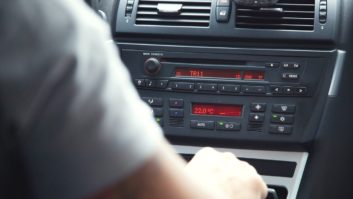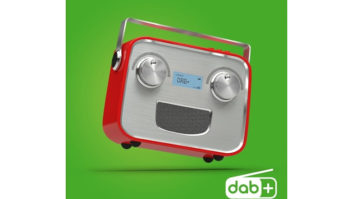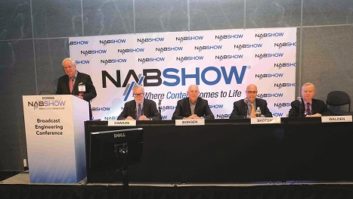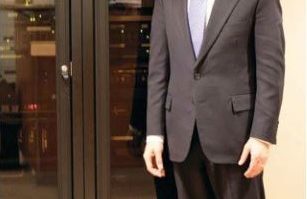I am writing in regard to the article “AM Bandwidth Issue Catches Fire” (Nov. 17).
Well, it should. How much benefit is really going to be done to our AM broadcast industry by further reducing our AM stations’ audio quality, as opposed to other changes?
If my last proof showed my audio bandwidth to be only 20 Hz – 5 kHz, the FCC and I would term that “garbage.” I am aware of the limited number of receivers in the market capable of receiving anything over 3-4 kHz, but why do we continue to allow the tail to wag the dog?
Obviously we have given up hope of improving the analog quality and are now willing to accept further degradation in audio and RF interference in order to get to the next stage. By the way, you can thank the receiver manufacturers for their major contribution. Even with the leaps we have made with DSP technology, the AM band has many challenges that have not been overcome.
Our industry has failed to organize properly and mandate standards of transmission receiver design. Further, changing the industry without a plan is reckless.
Mixed signals
I am still concerned about the message we sent the receiver industry by implementing the existing NRSC 10 kHz limit on daytime AM transmissions. It is understandable how much improvement can be realized at night with the 10 kHz band limit, but not in the day. If this solution has helped your station, you should be looking to other places for the fix. To further limit to 5 kHz, whom are we protecting?
As Radio World is primarily a technical publication, I feel it will not be necessary to discuss how this is absolutely non-beneficial in reducing daytime interference issues. As for night, think about whom this is really helping. The biggest issue for nighttime broadcasters is more the noise floor from the co-channel, not so much their first adjacent.
The analog side-band energy from the first-adjacent stations, given their geographical spacing and program-reliant intensities, typically is much less than the co-channel interference. This reduced audio bandwidth suggestion seems to do nothing more than improve the ability to listen to other stations (mostly Class As) outside of your local market at night.
Think about it. What first-adjacent station is affecting you in your local markets? Before you answer, do you really know who the contributors to your NIF really are? You should. Sure, there is reciprocal benefit with first-adjacent content removal, but the real problem is more the Class As pounding the lower-class stations in or near their markets, not the other way around.
I am not particularly happy with the thought of degrading my signal to allow for others out of town to be better heard. I am not against competition, but I can certainly see much better improvements that could be made to the AM band and its industry. What if most of the Class A stations lowered their nighttime power to 10 kW? Then we could allow a lot of those daytime-only stations on at night! Do we really need 50 kW at 670 kHz to cover our markets? When are those memos coming out?
I look at this as an interim step to bring in digital broadcasting, and on the surface it does seem to be a good one; but I have not seen any discussion directly planning for this. It would require the digital carriers to move in closer to the analog carrier and thus provide less first adjacent-channel interference, assuming our radios are narrow-banded. Does the proposed digital system (transmission and reception) allow for this flexibility?
Of course, I would expect this only following a digital solution being accepted/adopted by the FCC before I would back any changes. And before I go telling the FCC to adopt the currently proposed digital system, I want them to make this an open technology.
I don’t know about you, but I am not happy about having to pay ongoing licensing fees and being subject to the “growth” limitations such a protected system presents. As a broadcaster, I hope the FCC will not mandate stations to adopt a technology that requires ongoing licensing.
I have heard some broadcasters say that this will go away like the EAS SAME issue, but it will not.
The SAME is a technology that was designed to improve the safety of lives, which in most if not all cases fails to be protected by patents. The proposed digital solutions patent will most likely be highly protected. Imagine how much money you would have spent if you had to pay to be stereo, or to have an SCA, over the years?
I have purposely woven all over the road because there is a big picture formed by many small pieces. AMs have more to gain, and ultimately more to lose, with this technological implementation. We have to be better organized as an industry – and we need a plan. Not just any plan, but one that has the best of everyone’s interests at heart, technically and economically.
We need to advance the industry as a whole, not just hit and miss. We need a technology solution that puts the AM broadcaster in the same competitive arena as the FM. Segregation in other ways went out years ago, why not this one too?
This is the AM stereo debacle revisited. Whether it is the FCC, NAB, SBE, AES or the broadcaster, someone has to step in and dictate a standard for both transmission and reception. Until then, we seem to only be throwing things at a board to see what sticks.
Speak up, broadcasters, or you may soon be laid to rest.










